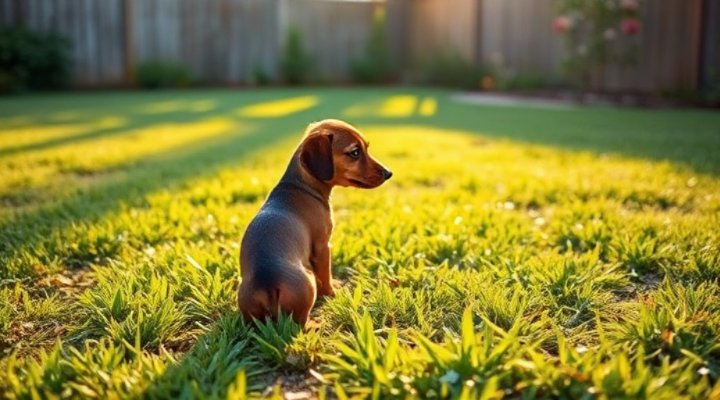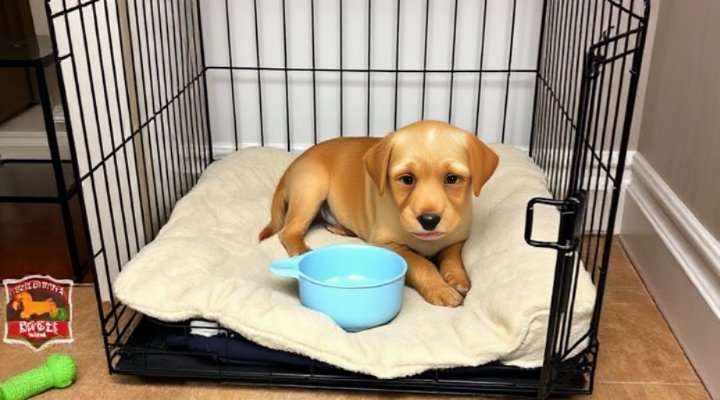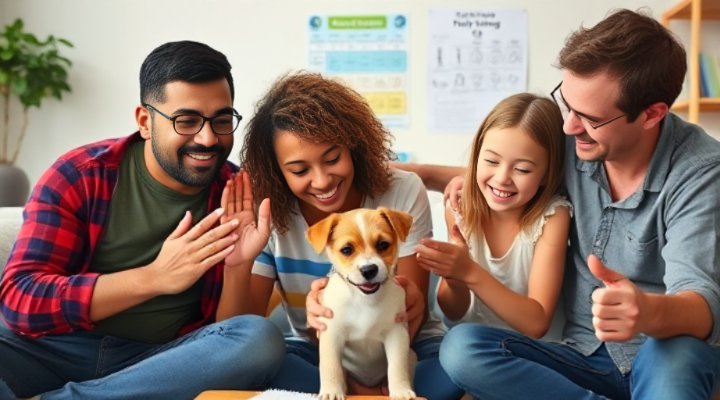Potty training is one of the first and most important lessons you’ll teach your new puppy. The best way to potty train a puppy requires understanding their needs, establishing routines, and using positive reinforcement. Above all, remember that accidents will happen – patience is key during this learning process.

Understanding Your Puppy’s Potty Needs
Puppies have small bladders and need frequent bathroom breaks. Generally, a puppy can hold their bladder for one hour per month of age. That is to say, a 2-month-old puppy needs to go out every 2 hours. During our first week with Max, our Labrador puppy, we set alarms throughout the night for potty breaks – exhausting but essential!
Signs your puppy needs to go include sniffing, circling, whining, or suddenly stopping play. When you notice these signals, immediately take them to their designated potty area. For more on recognizing puppy signals, check out our Puppy Training Basics Guide.

Establishing a Consistent Routine
Consistency is the foundation of the best way to potty train a puppy. Take your puppy out:
- First thing in the morning
- After meals (wait about 15-30 minutes)
- After naps
- After play sessions
- Before bedtime
Use the same door and path each time, and choose a specific potty spot in your yard. This consistency helps your puppy understand what’s expected. Meanwhile, keep a log of when your puppy eats, drinks, and eliminates to identify patterns.

Positive Reinforcement Techniques
When your puppy eliminates in the correct spot, immediately reward them with praise and a small treat. The timing is crucial – the reward must come within seconds of the behavior. In other words, have treats ready in your pocket!
Some trainers use a specific word like “potty” while the puppy is eliminating, which can later become a command. Avoid punishment for accidents – it only creates fear and confusion. Instead, focus on rewarding the right behavior, as discussed in our Positive Reinforcement Training article.
Crate Training for Potty Success
Dogs naturally avoid soiling their sleeping area, making crates a valuable tool. The crate should be just big enough for your puppy to stand, turn around, and lie down comfortably. For more on this, see our Puppy Training Schedule.

Handling Accidents Gracefully
Accidents will happen – it’s part of the process. When they occur:
- Interrupt gently if you catch them in the act (a quick “Oops!” and take them outside)
- Clean thoroughly with enzymatic cleaner to remove odors
- Don’t punish or rub their nose in it
Remember, your puppy isn’t being “bad” – they’re still learning. The key is to prevent accidents through supervision and scheduling rather than punishing mistakes.

Transitioning to Outdoor Potty Habits
As your puppy gains bladder control (around 4-6 months), you can gradually extend the time between potty breaks. However, continue to praise outdoor elimination to reinforce the habit. Some owners find bell training helpful – teaching the puppy to ring a bell by the door when they need to go out.
For puppies that will eventually need to go outside exclusively, begin reducing indoor potty options gradually. Likewise, if you live in an apartment, consider leash training for quick outdoor trips.
Special Considerations for Different Breeds
Some breeds pick up potty training faster than others. For instance, stubborn breeds like Huskies may require extra patience – check our Husky Training Tips. Small breeds have smaller bladders and may need more frequent trips outside.
In conclusion, the best way to potty train a puppy combines consistency, positive reinforcement, and understanding your puppy’s physical capabilities. With time and patience, your puppy will develop good bathroom habits that last a lifetime.
Related Keywords: puppy potty training schedule, housebreaking a puppy, puppy training pads, how long does it take to potty train a puppy, best puppy potty training methods
